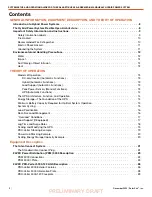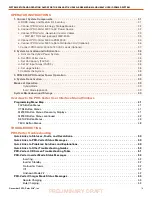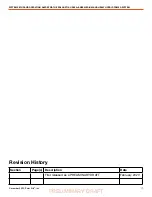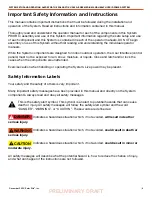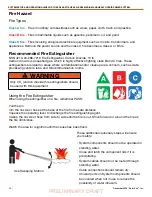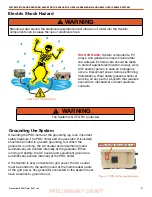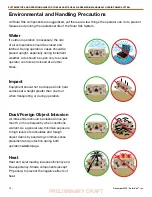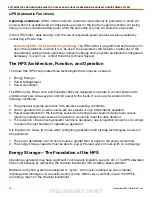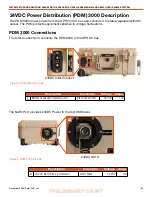
December 2020
|
Solar Stik
®
, Inc.
10
|
SYSTEM SETUP AND OPERATION GUIDE FOR THE SOLAR STIK USAF G-BOSS MEDIUM AND HEAVY HYBRID POWER SYSTEM
PRELIMINARY DRAFT
Fire Hazard
Fire Types
Class A fire
- Fires in ordinary combustibles such as wood, paper, cloth, trash, and plastics.
Class B fire
- Fires in flammable liquids such as gasoline, petroleum, oil, and paint.
Class C fire
- Fires involving energized electrical equipment such as motors, transformers, and
appliances. Remove the power source and the class C fire becomes a class A or B fire.
Recommended Fire Extinguisher
NSN 4210-00-288-7219 Fire Extinguisher, Carbon Dioxide, 10 lb
Carbon dioxide is a liquefied gas, which is highly effective fighting class B and C fires. These
extinguishers are ideal for areas where contamination and/or cleanup are a concern, such as data
processing centers, labs, and telecommunication rooms.
Using the Fire Extinguisher
When using the extinguisher on a fire, remember PASS:
P
ull the pin.
A
im the nozzle or hose at the base of the fire from a safe distance.
S
queeze the operating lever to discharge the fire extinguishing agent.
S
weep the nozzle or hose from side to side until the fire is out. Move forward or around the fire as
the fire diminishes.
Watch the area for reignition until the cause has been fixed.
Use Sweeping Motion
WARNING
Only CO
2
(carbon dioxide) fire extinguishers should
be used with this equipment.
These additional cautionary steps will ensure
your safety:
•
System components should not be operated in
standing water.
•
Close and latch the component lids if it is
precipitating.
•
System cables should not be routed through
standing water.
•
Cable connections should remain dry.
•
Unused ports on System components should
be covered when not in use to reduce the
possibility of water intrusion.


